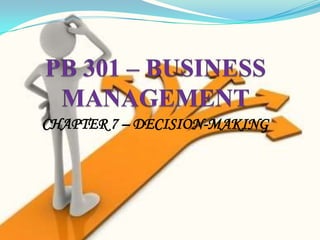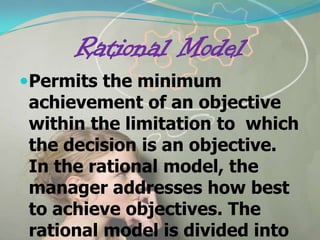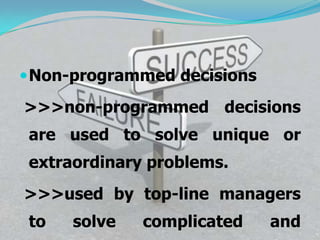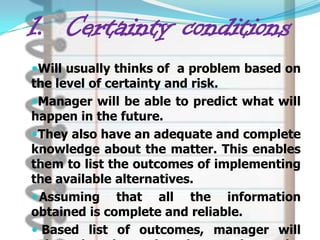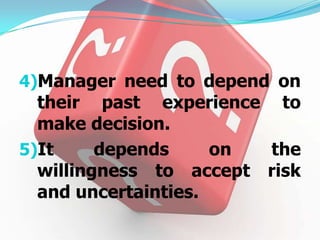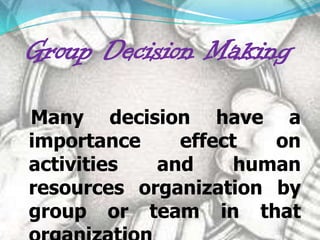This document discusses decision making models and processes. It begins by defining decision making and listing common decision making models, including the rational model, bounded rational model, and emotional model. It then discusses types of decisions, conditions for decision making, goals in decision making, decision making skills, and quantitative versus qualitative decisions. Finally, it outlines the typical 7 step rational decision making process and discusses techniques for group decision making such as brainstorming, the nominal group technique, the Delphi technique, and electronic meetings.
